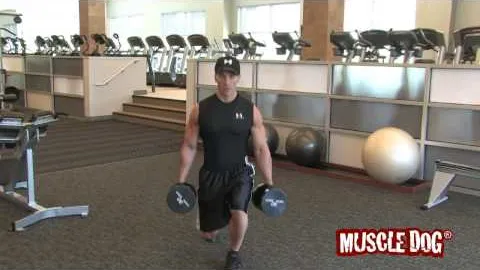Dumbbell Static Lunge Exercise: A Comprehensive Guide for Effective Leg Training
If you're looking to enhance the strength, stability, and aesthetic appeal of your lower body, incorporating the dumbbell static lunge exercise into your workout routine is a wise choice. This compound exercise primarily targets your quadriceps, hamstrings, and glutes, while also engaging your core for stability. Whether you're a fitness enthusiast, athlete, or someone looking to improve their leg strength, this comprehensive guide will provide you with all the necessary information to perform the dumbbell static lunge exercise correctly and maximize its benefits.
Why Choose the Dumbbell Static Lunge Exercise?
The dumbbell static lunge exercise offers numerous benefits, making it a popular choice among fitness enthusiasts. Some of the key advantages of incorporating this exercise into your leg training routine include:
- Muscle Development: By working your quadriceps, hamstrings, and glutes, the dumbbell static lunge exercise can help build strength and increase muscle mass in your lower body.
- Improved Functionality: This exercise mimics real-life movements, such as walking, climbing stairs, or getting up from a seated position. By engaging multiple muscle groups in a coordinated manner, the dumbbell static lunge exercise helps improve your overall lower body functionality.
- Enhanced Stability: The static nature of the exercise requires stability and balance, which engages your core and improves overall balance, stability, and coordination.
- Time Efficiency: The dumbbell static lunge exercise is a compound movement that targets multiple muscle groups simultaneously, making it a time-efficient option to maximize your leg workout.
How to Perform the Dumbbell Static Lunge Exercise
To reap the maximum benefits of this exercise and prevent any potential injuries, it's crucial to perform the dumbbell static lunge exercise with proper form. Here's a step-by-step guide outlining correct execution:
- Preparation: Start by standing tall with your feet hip-width apart and holding a dumbbell in each hand by your sides. Maintain good posture, engage your core, and focus on keeping your shoulders relaxed throughout the exercise.
- Step Forward: Take a significant step forward with your right foot, ensuring a wide stride length. Maintain a slight forward lean while keeping your torso upright.
- Lower Your Body: Simultaneously, bend both knees to lower your body towards the ground. Keep your right knee directly above your ankle and avoid letting it extend beyond your toes. Your left knee should hover above the ground without touching it.
- Full Range of Motion: Lower your body until your right thigh becomes parallel to the ground, creating a 90-degree angle with your lower leg. Aim to maintain your balance and avoid excessive leaning forward or backward.
- Return to Starting Position: Push through your right heel and extend both knees to return to the starting position. Switch legs and repeat the same steps, alternating between the right and left legs.
Important Tips and Variations
To ensure the effectiveness and safety of your dumbbell static lunge exercise, keep the following tips in mind:
- Weight Selection: Choose dumbbells that challenge your muscles without compromising your form. It's better to start with lighter weights and gradually increase the load as you develop more strength and stability.
- Slow and Controlled: Focus on executing the exercise with slow and controlled movements. This approach not only enhances muscle engagement but also reduces the risk of injury.
- Maintain Proper Alignment: Keep your spine neutral, avoid rounding your back, and ensure your knee aligns with your ankle throughout the exercise. This alignment prevents undue stress on your joints and maximizes the benefits targeting specific muscles.
- Variations: Once you have mastered the basic dumbbell static lunge exercise, you can diversify your routine by incorporating various modifications. These include performing walking lunges, reverse lunges, or adding a knee lift at the top of each lunge to engage your core further.
- Breathing: Inhale during the downward phase (lowering your body) and exhale during the upward phase (returning to the starting position). This breathing pattern helps oxygenate your muscles and maintain stability.
Safety Precautions
While the dumbbell static lunge exercise is generally safe for most individuals, it's essential to consider the following precautions:
- Warm-up: Before performing this exercise, it's crucial to warm up your muscles by engaging in approximately 5-10 minutes of light cardiovascular activity. This could include brisk walking, jogging, or cycling.
- Proper Footwear: Wear supportive athletic shoes that provide stability and cushioning to minimize the risk of any foot or ankle injuries.
- Personal Limitations: If you have any pre-existing knee or joint conditions, it's advisable to consult with your healthcare professional or a certified trainer before incorporating the dumbbell static lunge exercise into your routine. They can help modify the exercise to suit your specific needs and limitations.
Conclusion
Incorporating the dumbbell static lunge exercise into your leg training routine can provide you with a wide range of benefits. Not only does it target and strengthen your quadriceps, hamstrings, and glutes, but it also helps improve overall stability, functionality, and coordination. By following the proper form and technique outlined in this guide, you'll ensure a safe and effective workout every time. So, grab those dumbbells and get ready to take your leg training to the next level!
